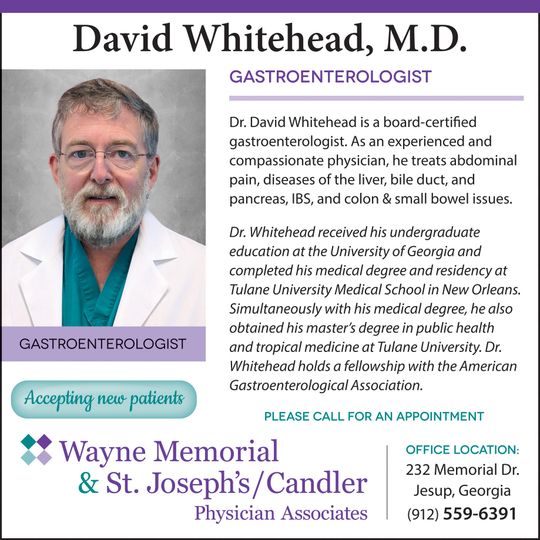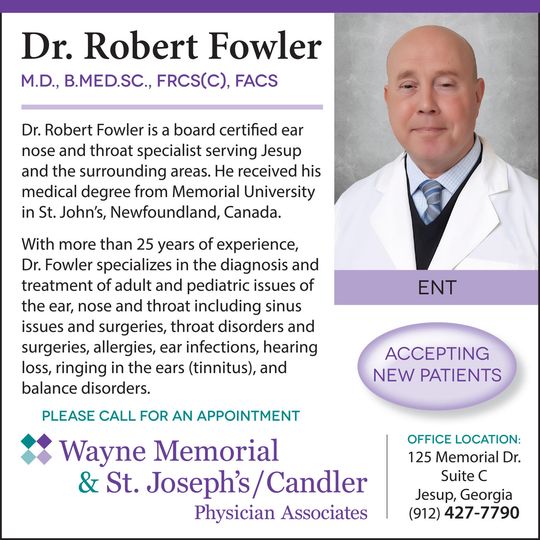Speed continues to be a problem, especially on Georigia 520, known as Corridor Z and the South Georgia Parkway.
“During our last data review, we found that nearly 20 percent of all accidents investigated by WPD occurred on GA SR 520,” said Waycross Police Chief Tommy Cox via email. “Speed surveys showed over 50 percent of all vehicles were exceeding the posted speed limit.”
Corridor Z is a primary transportation artery through Waycross. The speed limits are set between 35 and 45 mph depending on location in the city.
However, it isn’t uncommon for both 18-wheelers and passenger vehicles to travel well beyond those limits.
Corridor Z is also one of the few alternate routes available for motorists to circumvent trains often paralyzing the city’s traffic flow.
The Corridor Z problem is not new. In 2001, the Georgia Department of Transportation (GDOT) conducted a transportation study for the City of Waycross and Ware County and developed a plan for the city known as the Waycross East Bypass.
The bypass would have resulted in a new four-lane roadway paid for with GDOT funding beginning in Pierce County at U.S. Hwy. 84 and ending at US Hwy. 1/23 in Ware County.
The bypass was opposed out of fear it would reroute traffic away from local businesses in downtown Waycross.
Former Mayor Clarence Billups and the city commissioners sent an October 15, 2013 resolution to the city’s elected congressional delegation to oppose the bypass, resulting in the continued and increasing number of 18wheelers barreling through downtown.
In 2023, pedestrian bridges at Garlington Avenue and Samuel Street were included in the TSPLOST proposal. Both pedestrian bridges were voted down by members of the Transportation Investment Act (TIA) Board based on studies showing the majority of people do not use pedestrian bridges due to the steps. Bridges also do not address the use of bicycles.
City Manager, Ulysses ‘Duke’ Rayford has been diligent in pursuing a relationship with GDOT officials to address the problem. Rayford is utilizing GDOT traffic calming techniques including ticketing and crosswalks.
Because Corridor Z is a state road, installing traffic lights, another calming technique, has strict guidelines.
“GDOT requires 800 cars in eight hours to cross over the highway to justify a stop light,” said Rayford. “I told them it’s a poor measurement of safety. We need a better way to measure the dangers, speeding being one of them. The speed limit is between 35 and 45 out there and you see trucks out there going crazy.”
“This is why we enforce speeding violations so strictly on this road,” said Chief Cox. “The majority of accidents involve speed-related factors. Higher speeds result in lower reaction times making it difficult for drivers to respond to pedestrians crossing the roadway where no crosswalk exists.
“Our crosswalks are very seldom used. Two things are for sure — crosswalks and drivers following the posted speed limit decrease accidents.”
Rayford said ticketing has had mixed results. “As soon as I go too far, the state calls and complains because we ticket the trucks,” he said. “They complain we’re slowing down transportation through here.”
Rayford has sent countless emails and made dozens of phone calls to GDOT officials in an attempt to facilitate solutions to the Corridor Z problem. He has even visited their offices in both Jesup and Atlanta.
“GDOT told me they were going to do safety studies. They’ve been doing safety studies for over a year now,” said Rayford.
GDOT District Communications Officer Jill Nagel confirmed via email a study is being conducted .
“GDOT is currently conducting a traffic study on State Route (SR) 520 from SR 23/Memorial Drive to Victory Drive/US 84,” she said. “This study systematically examines traffic conditions, patterns and behaviors within a specific area. They are reviewing access management aspects of the traffic study, including the consideration of concrete medians, and modifying pedestrian accommodations.
“Determining a traffic study timeline is problematic because it’s an evolving process until approved concept report. Phase one includes study screening to identify improvement can be done, a concept of a project, getting consensus on the concept from the local government. Local input could result in obtaining more traffic data and a revised concept.”
In the meantime, Rayford is working within GDOT’s guidelines to improve safety in the area.
The crosswalks, which were installed in response to a pedestrian fatality, have been retrofitted with raised lights for increased visibility. The caution light has also been raised.








